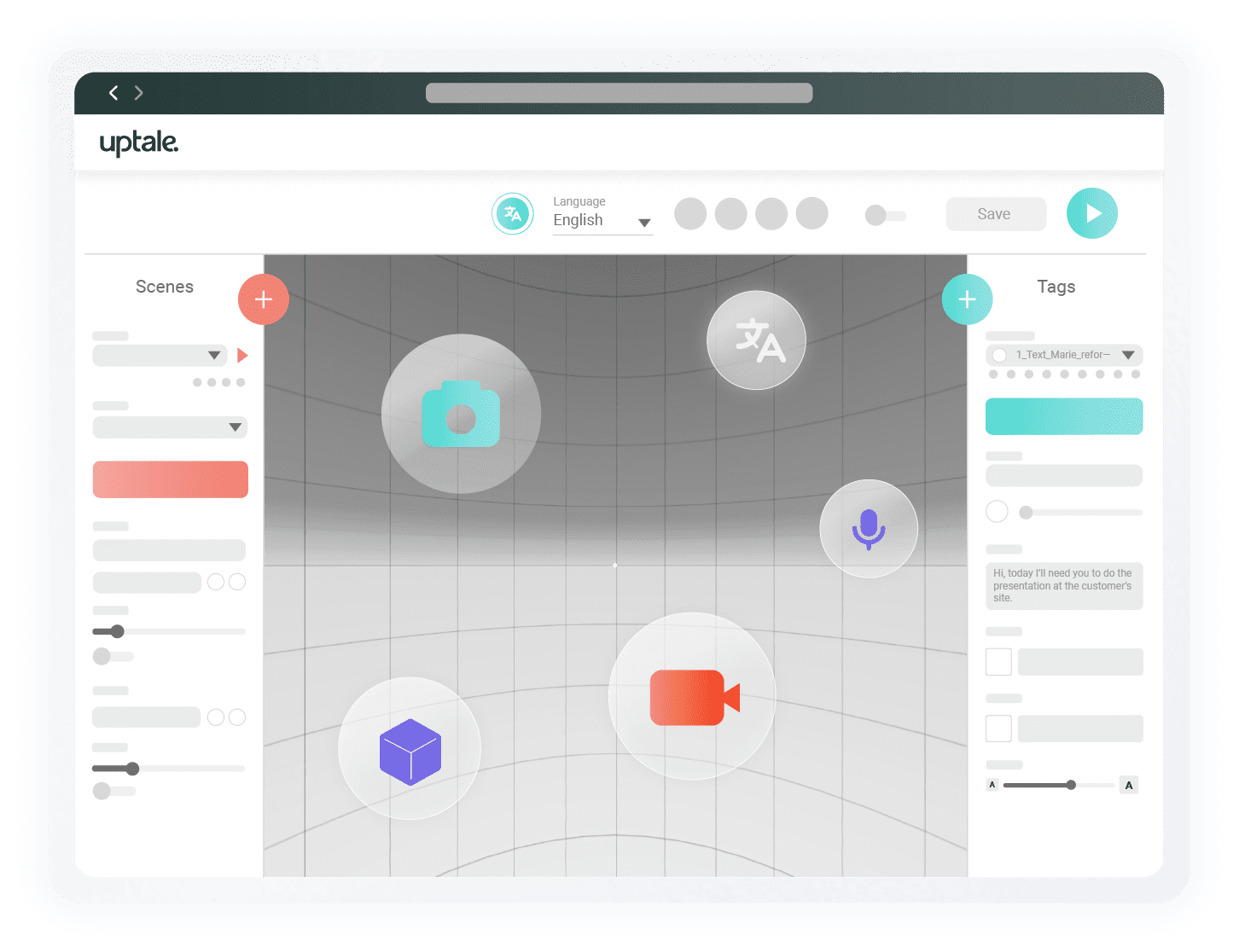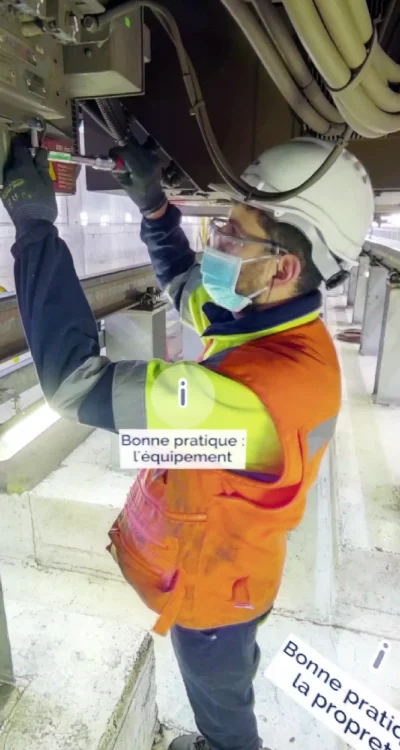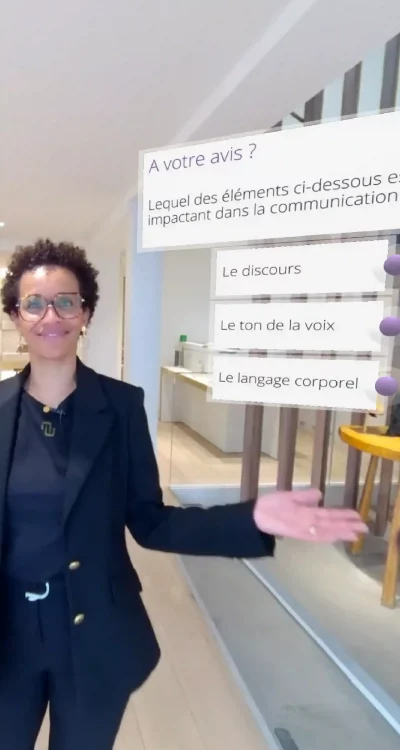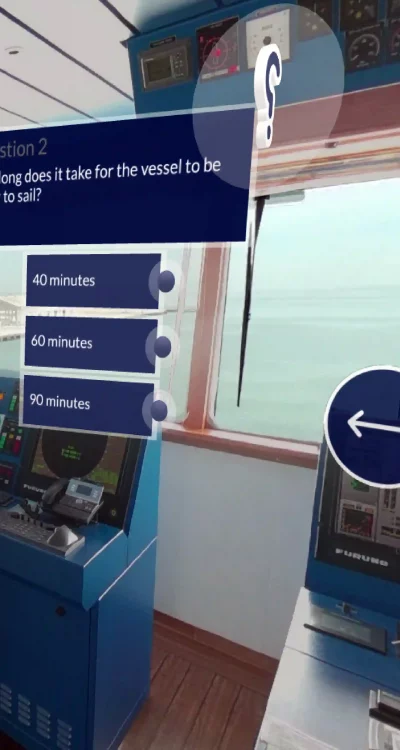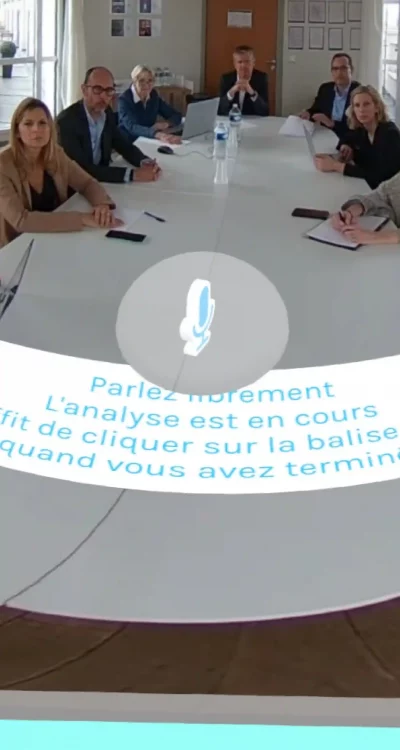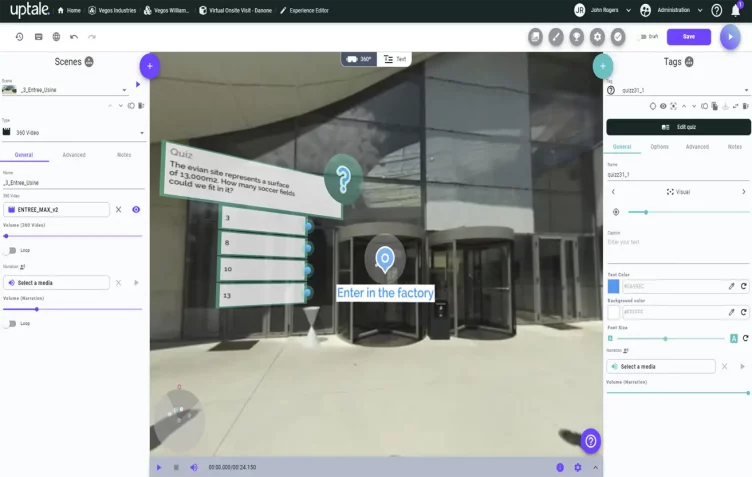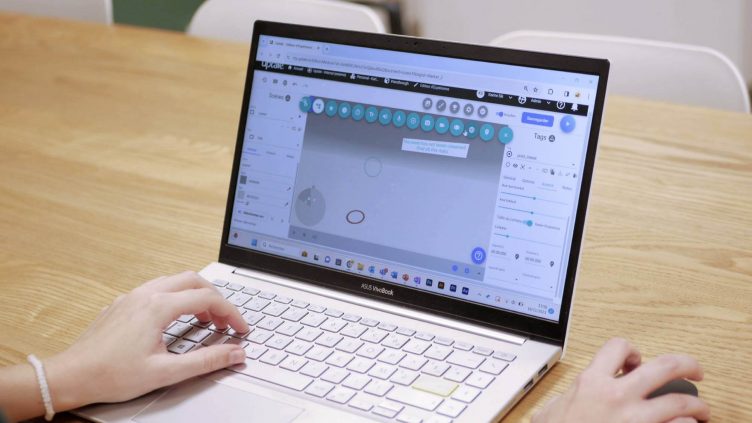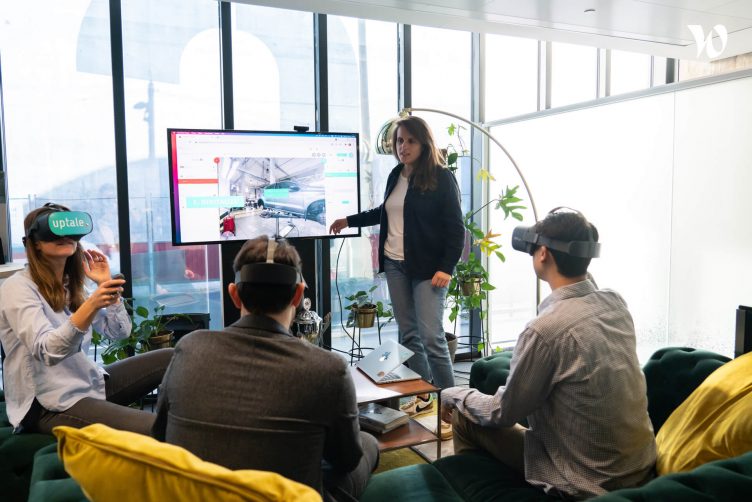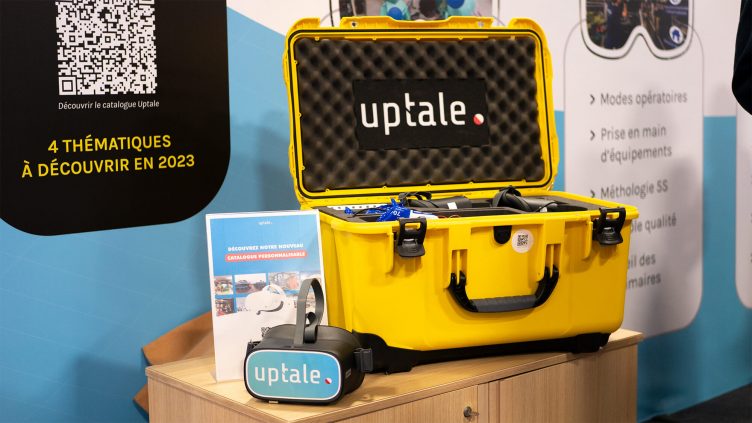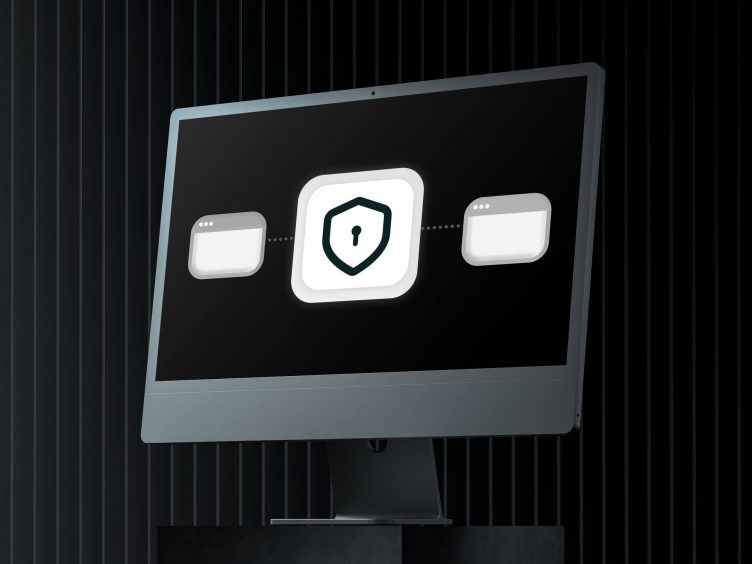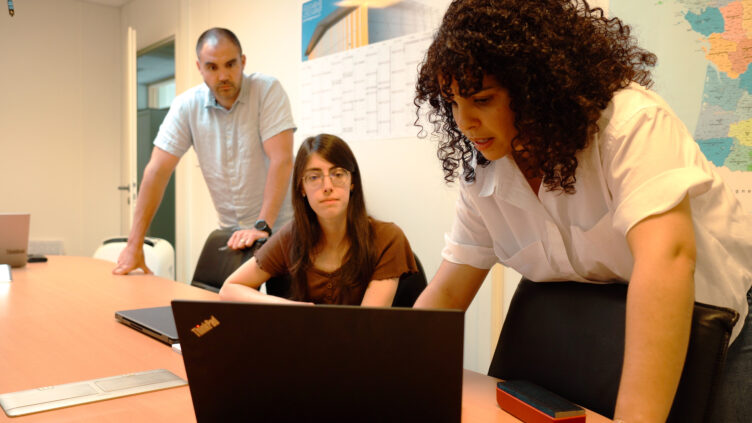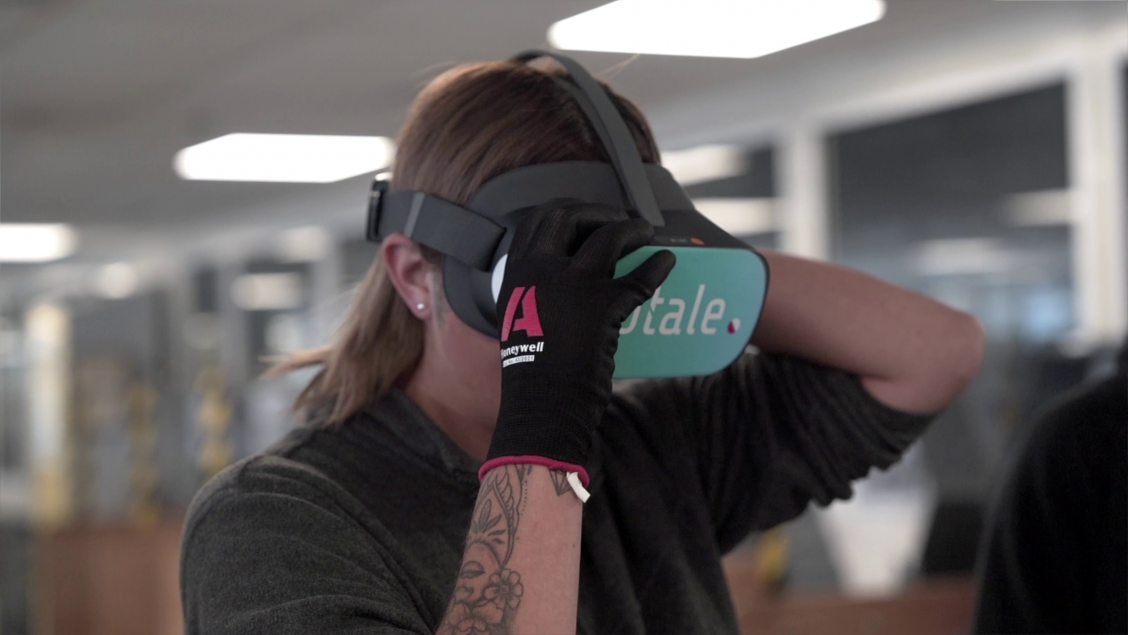Health & Safety
Train your teams on safety standards:
– Safety inductions
– Safety rules
– Emergency situations
– Lockout/tagout
– Physical preparation
Uptale’s technological ecosystem
Uptale is the Digital Learning solution for realistic, experiential training tailored to every need.
No-Code platform
Benefit from total flexibility to create and customize your training courses with an intuitive web platform, with no technical skills required.
Realistic immersion
Recreate authentic environments with real 360° images and videos, for an experience rooted in reality.
Any device, any time
Train your teams anywhere, anytime, thanks to multi-device compatibility, guaranteeing fluid, instant learning.
AI-powered
Immerse yourself in captivating experiences with AI-powered interactions to enrich the experience and deliver ever more interactive learning.
Training at Digital Speed
Train safely, reduce training time and costs, increase training impact and learner retention.
Our customers are convinced of the effectiveness of Immersive Learning thanks to proven, concrete results.
(1.5h → 20 min)
200+ Clients trusts us


























